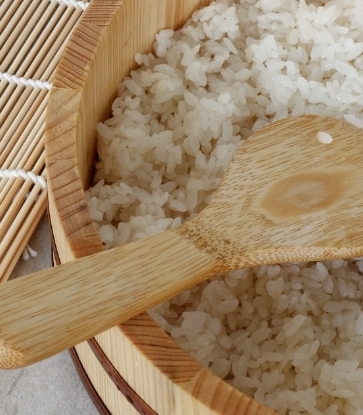According to registered Traditional Chinese Medicine practitioner Yau Wing Lam in Hong Kong, monk fruit, or luo han guo in Chinese, has cooling properties and a naturally sweet flavour. Boiled into a herbal drink, it is able to relieve body heat, phlegm and cough, as well as nurture the lungs. That said, the monk fruit in the markets usually have an unappealing dark brown colour and a polarising burnt, bitter aftertaste.
But the arrival of another variety of the fruit might just increase its popularity. The golden monk fruit derives its name from the bright gold hue of its skin. Although it is several times more expensive than its dull counterpart, it is free of the unpleasant burnt aftertaste. No wonder even gastronome Chua Lam launched his own brand of golden monk fruit in mainland China.

A new technique for better flavour
Monk fruit can have such discrepancies in colour and taste because of its processing methods. Fresh monk fruit is green and can be boiled into a sweet drink. However, it also tastes a bit grassy and does not keep well. For this reason, suppliers would roast the fruit at temperatures between 80°C to 100°C for five to seven days to dry it out for longer storage.
Temperature is a key element: high heat burns the fruit, darkens its skin and caramelises the sugar within. Traditionally, a wood fire is used for roasting monk fruit, which results in a more bitter flavour and a deeper shade of brown, while roasting it on an electric stove creates a lighter tone, but produces the same bitterness.
A new dehydration method is used to process golden monk fruit — though more expensive to produce, low-temperature vacuum-drying achieves the perfect balance of colour and flavour. After selection, the fresh monk fruit is washed by machine and placed in the special vacuum dryer which is then heated by microwave. The dryer reaches just under 50°C to evaporate the moisture inside the fruit, retaining its bright colour and eliminating any burnt tastes. After that, the yellow, long-lasting golden monk fruit is good to go.

Tips For Buying
This new method of preserving the fruit produces none of the bitterness that comes through caramelisation. More than that, it preserves more of the natural nutrients in the fruit. Some of those include temperature-sensitive vitamin C, active enzymes and proteins. When you boil or brew it in water, golden monk fruit tastes different from its traditional counterparts. The liquid is just as bright yellow, sweet with a pleasant aftertaste. There’s an additional fruity fragrance absent from the darker monk fruit.
Golden monk fruit has a couple disadvantages nonetheless. In addition to the higher price tag, the shell of the fruit is more fragile, causing it to break more easily during transportation. Furthermore, to facilitate moisture evaporation during production, the golden monk fruit has a hole drilled into its top which sometimes invites pests to burrow inside. When selecting golden monk fruit, it’s recommended to buy those that are individually packed with its body intact for better hygiene and easier storage.
A specialty of Guangxi
Like the traditional one, golden monk fruit is mostly produced in the province of Guangxi in China, especially in Yongfu County in Guilin. This area has over 300 years of history cultivating the fruit. Until now, locals still use the natural resources from the surroundings to grow it. Don’t miss out if the label specifies the monk fruit in front of you was grown there. That’s basically a seal of quality.

Brewing Method
To reap the many benefits of golden monk fruit, you need to learn how to prepare it. And it can’t be simpler: break the fruit open and put a quarter of it in a teapot. Fill it with hot water of about 80°C — don’t use boiling water, because very hot water will make the liquid too sweet, killing all nuances of flavour. The first brew takes a minute or so. As you pour out the water, its amber hue and sweet scent are wonderful.
After that, you can adjust the brewing time according to your own preference. The fruit in the teapot can be discarded and replaced when its flavour is totally drawn out. When the weather is exceptionally hot, it’s a good idea to let the water cool and then put it in the fridge so you can enjoy a cup of perfectly chilled nectar later.
From the perspective of traditional Chinese medicine, however, not everyone is suited to consume monk fruit. Its cool temperament is especially hazardous to flu patients. Consult a practitioner before you proceed.
This article was written by Joe Chan and translated by Vincent Leung. Click here to read the original version of this story.




















